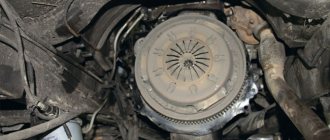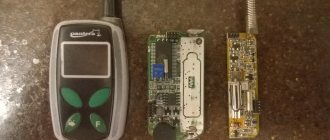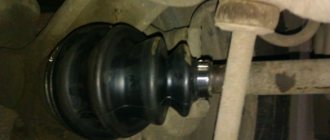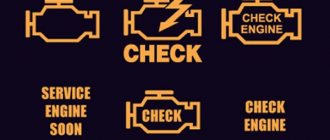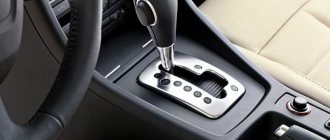With the development of the automotive industry, in addition to functional and external components, vehicle components and assemblies are being improved and changed. The introduction of an automatic gearbox made it possible to ensure comfortable driving without the need to constantly squeeze the clutch and manually change gears, as with a manual transmission. Having become widespread in America, the automatic transmission has become popular throughout the world. Currently, almost every car is supplied to the market with an automatic transmission. It is installed on cars with rear and front wheel drive.
Varieties
There are three main types of automatic transmission:
1) Classic hydraulic gearbox. In it, the gear ratio is changed by blocking the planetary clutch clutches using oil pressure.
2) Robotic automatic transmission. Switching is carried out by the electronic transmission control unit. Highlight:
- Tiptronic – with the ability to manually change gears.
- DSG is a complex design and a well-developed operating scheme that allows for gear changes that the driver does not feel. A “Sport mode” with a rapid increase in torque is also possible.
3) Variator - changing the torque by adjusting the diameter of the drive and driven pulleys.
Each type of automatic transmission is unique and requires specific handling, maintenance and repair.
Checking the automatic transmission for serviceability
Every driver should know how to check the automatic transmission for proper operation. A serviceable automatic transmission operates smoothly and without any extraneous sounds. Gear shifting should not be accompanied by jerks, and vehicle acceleration should not be too late. This is evidenced by the correct and precise operation of all components of the gearbox. The main role is played by the condition and properties of the oil, since thanks to it the switching is carried out. The lubricant level should be maintained at normal levels. The fluid itself must be suitable in all respects for a specific gearbox. Also, discoloration and the presence of large amounts of wear products are not allowed.
Kicks while accelerating
Problems leading to kicks in the box during acceleration and when transitioning from first to second speed occur due to the following reasons:
- old oil;
- clogged filter;
- Incorrect position of the gear shift inhibitor.
Read
Features of operation and maintenance of automatic transmission
Otherwise, the gearbox is obedient and does not twitch. By eliminating the reasons described above, the car owner will extend the service life of the automatic transmission.
Automatic transmission malfunctions
Problems with the automatic transmission that arise when it malfunctions are conventionally divided into malfunctions related to the electronic, mechanical and hydraulic parts. Incorrect operation of one or another part is accompanied by a number of symptoms that are different from each other and can be eliminated in different ways.
Malfunctions of the electronic part include failure of the sensors located in the box or loss of contact between the sensor and the electronic control unit. As a result, the machine does not work correctly, and a “check” lights up on the instrument panel. Mechanical malfunctions, such as wear of gears, shafts and friction elements, are accompanied by jerks when changing gears or the inclusion of a speed that is unacceptable in this operating mode. If the hydraulics malfunction, the components and mechanisms of the hydromechanical transmission malfunction.
The reasons are clogged oil channels or a broken oil pump. The most common malfunction occurs when the automatic transmission jerks when engaging a gear. This will be discussed below.
carbon fiber wrap
The design of modern cars does not always tolerate outside interference, and if this story is not well thought out and highly professional, then you should think twice before tuning.
However, the desire to stand out from the army of similar ones, as if they had just rolled off the assembly line, may prevail, and covering the doors or hood of a car with carbon fiber may be a worthy solution to this issue.
Our specialists have been making car vinyl for several years and have proven their creativity to meet modern requirements and high quality. As a result of the work carried out by the specialists of this company, a variety of car models have acquired a new sound and unique appearance.
And the protective properties of the film from external mechanical influences became an additional bonus.
It's no secret that many car enthusiasts have a special attitude towards their iron friends. Very often they give them names, calling them nurse or baby. It all depends on objective circumstances, but the closer the owner is to the car, the more he wants to make it stand out from the crowd, give it a more brutal or, conversely, sophisticated look. Be that as it may, it is still better than superficial neglect, expressed in a constantly dirty, unkempt state.
This entry was posted in Articles.
About admin
You may also like…
automatic transmission ask a question
July 20, 2017
Hello.
July 9, 2017
Causes of jerking when changing gears
The reasons why the automatic transmission jerks when the gear is engaged are directly related to the above-mentioned malfunctions. The durability of an automatic transmission depends on the driver’s driving style and the oil that is poured into the box.
A quick start from a standstill, rapid acceleration of the car and sudden gear changes are unacceptable, otherwise the required oil pressure will not be created. Mechanical and friction elements simply do not have time to work in time, which increases their wear. As a result, the automatic transmission jerks when shifting.
Now a few words about lubricants. Oil should be poured into the automatic transmission with special care. Transmission fluid marked ATF is poured here, which in its properties must correspond to this box. A low level creates insufficient pressure, and the automatic transmission jerks when the gear is engaged. The oil itself cannot be mixed with liquid of another brand. It must be red and cannot contain large amounts of wear debris. This leads to clogged channels (reduced pressure) and increased wear of rubbing parts (gears, shafts and friction elements).
Another possible reason is poor heating of the oil in the crankcase or a malfunction with the engine itself. The motor and gearbox are closely connected, and constant changes in torque are reflected in the movement.
What does “automatic transmission kicks” mean?
Car drivers encounter such a problem as a delay in gear shifting when shifting the gearbox from one gear to another. It happens while driving, when the speed decreases or increases, the car begins to twitch. This behavior of the car occurs due to breakdown of transmission elements. In driver slang, this is called “kicking in the automatic transmission.” Novice car enthusiasts often don’t know how to understand that the automatic transmission is kicking, or they think that it’s a problem with the engine.
Experienced car owners distinguish kicks into the following categories:
- strong shocks when the driver moves the gearbox from position “P” to “R” or “D”;
- at the moment of movement, the driver and passengers feel as if they were hitting the bumper, and the car suddenly rushes forward;
- shocks and impacts when changing from one speed to another: for example, from 2 to 3 or from 4 to 3.
Before you solve the problem of automatic transmission kicking yourself or replace it with a new one, you need to find out the cause of these kicks.
Read
Do-it-yourself complete and partial oil change in a Honda CR-V automatic transmission
Box repair
Automatic transmission repairs will always cost a lot due to the high cost of parts, the availability of special equipment and the complexity of the work itself. Often the price tag reaches 1 thousand dollars. It is almost impossible to independently fix a malfunction when the automatic transmission jerks when the gear is engaged, without having certain knowledge and tools.
If you have experience and free time, the box must be removed from the engine, after draining the oil from it. This is also not an entirely easy process, especially on a front-wheel drive car.
What's next?
Then the torque converter is removed, the rear crankcase cover is unscrewed, which is removed by hitting special protrusions with a hammer. Next, the oil pump is unscrewed from the reverse side, and the gears with shafts and planetary gear are removed from the front. The hydraulic control unit is removed from the box tray. All removed elements are disassembled and inspected for damage and wear. Damaged or heavily worn parts are replaced with similar ones, their operation is checked, and then the entire structure is assembled in the reverse order.
Such repairs are a fairly responsible and time-consuming process. Therefore, if you lack experience, you should contact a service station. Currently, the price for automatic transmission repairs varies from 5 to 25 thousand rubles.
Maintenance and operation
For normal and durable operation of the automatic transmission, you must adhere to the following rules during maintenance and operation:
- The first thing is to carry out maintenance on time: constantly monitor the oil level, change it along with the filter every 60 thousand kilometers. If the car is operated in difficult conditions, then the oil should be changed every 40 thousand km.
- Before starting the car, you need to depress the brake pedal, engage the gear and wait a little (1-2 seconds) so that the required oil pressure is formed in the box and the clutches are activated in time. Then, smoothly releasing the brake pedal, start moving. While driving, it is not advisable to press the accelerator pedal sharply to avoid increased wear of the rubbing elements.
What to do
In order to prevent the problems that were described in the blocks above, each car owner needs to carry out preventative maintenance on his own car, including the gearbox:
- check the transmission fluid level and its quality;
- change the oil if necessary;
- visual check for damage to wiring;
- disassembling and washing the automatic transmission;
- replacing old elements with new ones.
To check the condition of the friction discs you need to:
- Drive onto a flat area.
- Place the gear shift lever in the “N” position.
- Depress the brake pedal.
- See if the car is moving. If the answer is yes, then the clutches are burnt and do not work. The box needs to be disassembled and replaced.
Attention! If the car owner cannot do this on his own, then he must contact a qualified service center. Experienced and conscientious specialists will also not dissuade you from preventing automatic transmissions. Since replacing a full automatic machine is an expensive matter.
But what to do if the automatic transmission kicks after repair.
Read
Do-it-yourself diagnostics and repair of Mazda automatic transmission
What to do if the machine continues to kick after repair
If kicks and jolts are observed after an automatic transmission has been repaired, this does not mean that the car owner was charged money for nothing. The box may not be calibrated.
Instructions for calibrating the box if it continues to kick after a major overhaul:
- Reset the ECU by removing the battery terminal for a quarter of an hour.
- Put the handbrake on.
- Start the car and warm up the gearbox.
- Wait until the revolutions drop to 1000. Press the brake pedal and move the gear selector to the “Drive” position for a couple of minutes.
- Repeat the same with each position of the gear shift lever.
- Switch the selector to “Sport” mode.
- Drive a short distance for 15 minutes.
You also need to clean the throttle valve.
- Move the rocker to position “P”.
- Turn off all electrical appliances.
- Start the engine for ten minutes and turn it off.
- Start and turn on electrical appliances again with the engine running.
- Turn off electrical appliances and the engine.
Now everything is ready.
If the box continues to kick, then you need to contact the diagnostic center again. Repairs are expensive for automatic transmissions, so you need to carefully select specialists who will disassemble and reassemble the automatic transmission.


